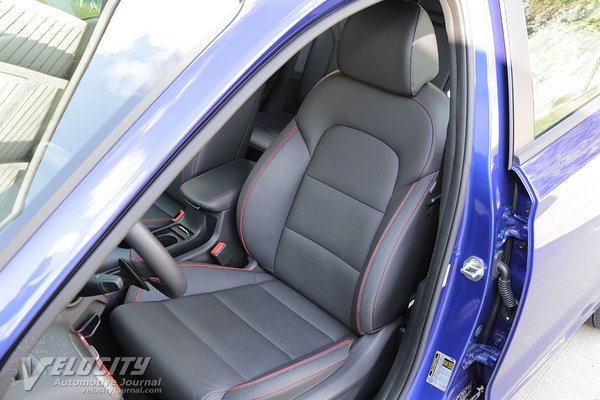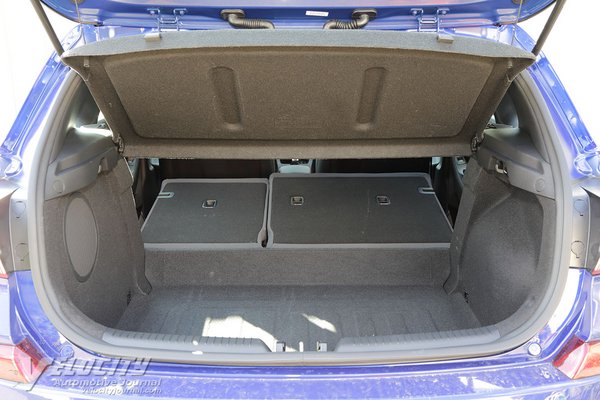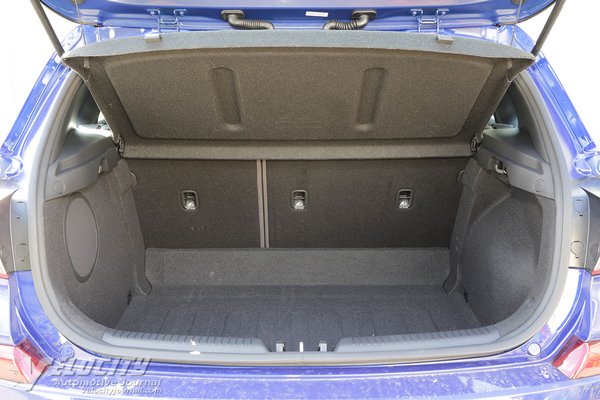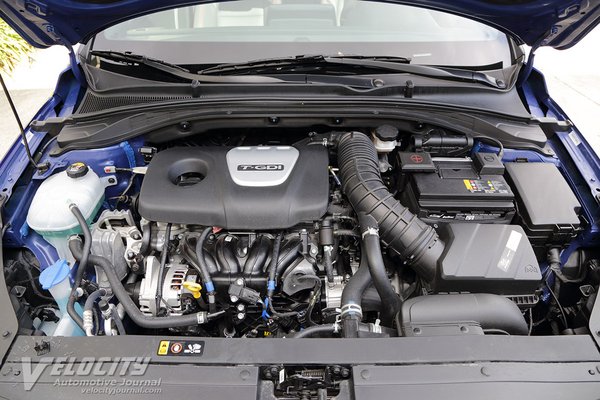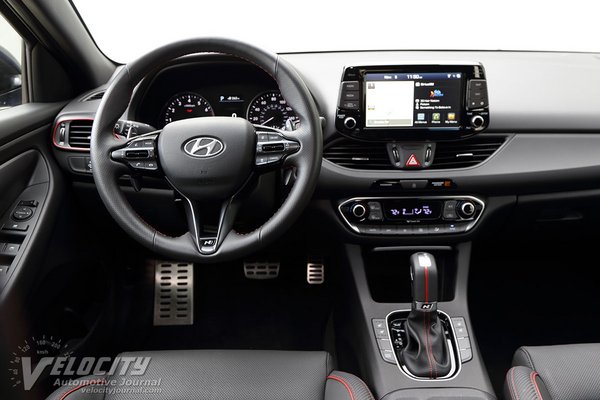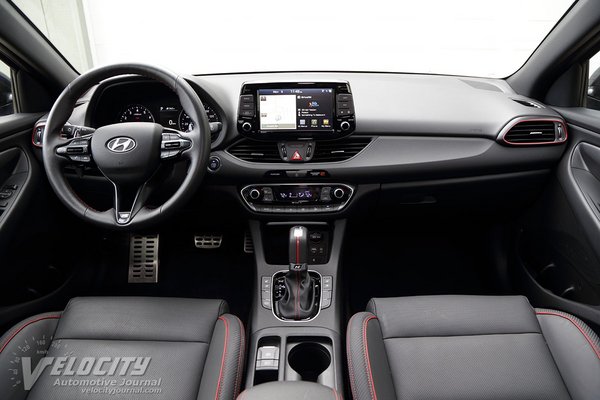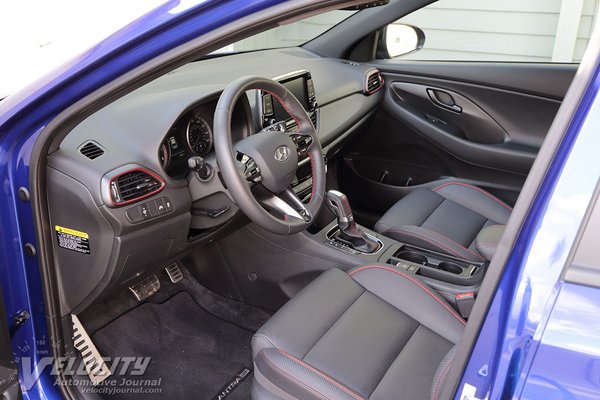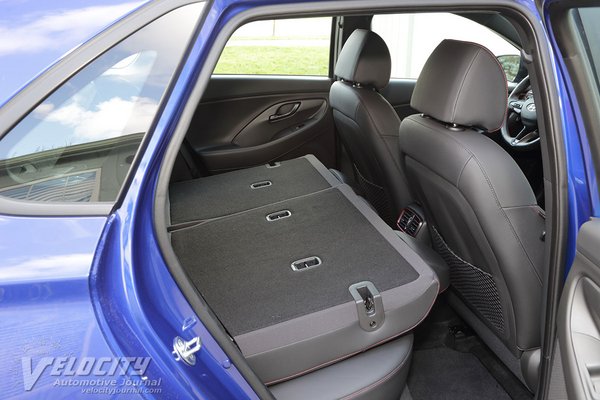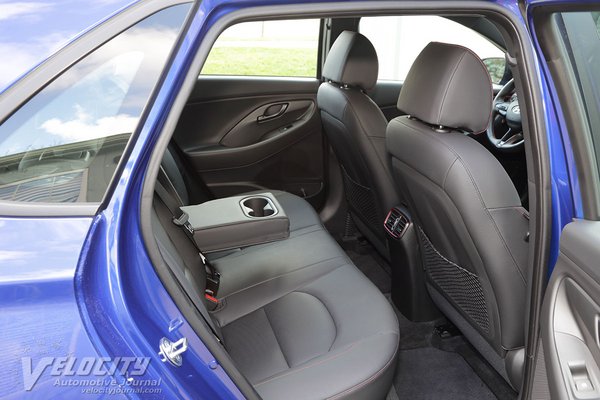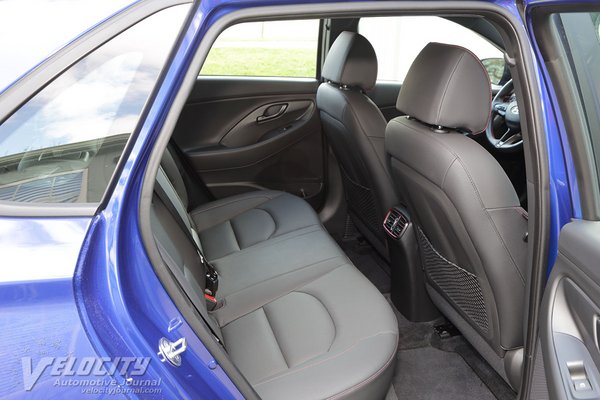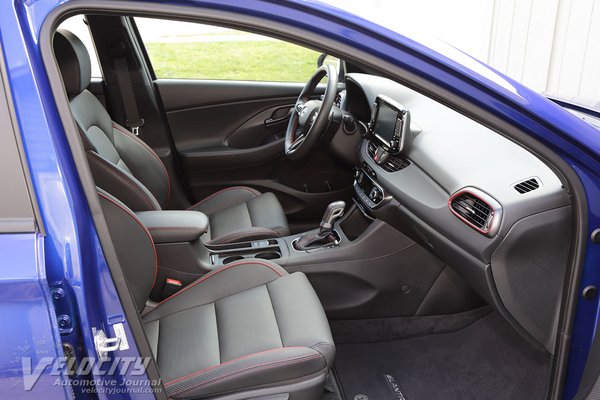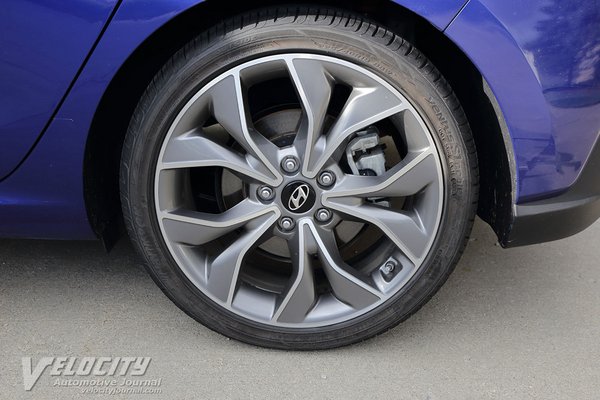2019 Hyundai Elantra GT N Line Review
11/30/2019
Shahed Hussain
Affordable compact hatchbacks are disappearing from the US, as manufacturers and customers continue to shift to small SUVs. Honda, Toyota, VW and Hyundai do cater to this market since these vehicles continue to be popular outside the US. The Elantra GT is a welcome addition to the segment.
Hyundai offers two variants: the base 2019 Elantra GT ($20,450) and Elantra GT N Line. We tested the Elantra N Line, equipped with the 7-speed dual-clutch transmission ($24,400) instead of the standard 6-speed manual ($23,300). The test vehicle included the optional Tech Package ($3,850). The estimated MSRP added up to $29,180 including the $930 freight charge.
Significant standard equipment list includes: sport leather seats (heated in front), LED headlights & taillights, ABS, stability control, rear spoiler, rear wiper, and rearview camera; Android Auto and Apple CarPlay are also standard. The Tech Package adds a panoramic sunroof, navigation with 8-in. touchscreen, Infinity audio system, leather-wrapped steering wheel and shift knob, ventilated front seats, power driver's seat with lumbar support, keyless (pushbutton) start, blind spot collision warning, smart cruise control, forward collision avoidance, and lane change assist.
The base Elantra GT is powered by a 161-hp 2.0L inline-4, but Hyundai reserves an all-aluminum 1.6L turbo for the hotter N Line. The direct-injected 1.6L inline-4 is rated at 201-hp @ 6,000 RPM and 195 lb.-ft. between 1,500-4,500 RPM. A 6-speed automatic is the only gearbox available with the 2.0L four, but the N Line gets a choice of a standard 6-speed manual or 7-speed dual-clutch transmission (DCT) driving the front wheels. As is common with DCTs, there are two final drive ratios: the higher final drive (4.643:1) is meshed with gears 1, 2, 4, and 5 with the other gears driving the lower final drive (3.611:1). Fifth (0.809:1) through seventh (0.717:1) are overdrive ratios. EPA fuel consumption is rated at 25/32 MPG (city/hwy.); the 6-speed manual loses 2 MPG in both city and highway compared to the DCT.
Both Elantra GT models use MacPherson struts and a 24 mm dia. stabilizer bar for the front suspension. The base Elantra GT has a torsion beam semi-independent rear suspension, but the N Line is upgraded to a multi-link independent setup with dampers, coil springs and 17 mm dia. stabilizer bar. Rack-and-pinion steering with electric motor assist is geared for 2.6 turn lock-to-lock. Disc brakes are at all four wheels, but the N Line is fitted with larger brakes: 12.0 in. dia. front rotors and 11.2 in. dia. rear rotors. The base Elantra GT has P225/45R17 tires on 17-in. diameter alloy wheels. The N Line has larger 18-in. dia. alloy wheels, but tire fitment depends on the transmission. Staying with the standard 6-speed manual keeps the P225/40R18 Michelin Pilot Sport 4 summer tires. Opting for the DCT substitutes P225/40R18 Hankook Ventus S1 noble all-season tires. Curb weight ranges from 3,067-3,155 lbs. with the DCT. The 6-speed manual is a slightly lighter at 3,014-3,102 lbs.
Hyundai's interior design is sporty yet conservative. Perforated leather seats with red piping and stitching on the bolsters add color to the predominantly gray interior hues. Polished aluminum accents on the steering wheel, shifter and climate controls contrast to the gloss black bezels. The leather-wrapped steering wheel has integrated audio, phone, and cruise controls. The gauge cluster consist of an analog tachometer and speedometer with inset fuel and coolant temperature gauges. A multi-function display can be configured to show speed or vehicle status via buttons on the steering wheel. The 8-in. infotainment display shows audio and navigation map settings. Buttons on each side of the display allow quick access to frequently used functions. Rotary knobs for volume and tuning are easy to use while driving, although the audio controls on the steering wheels are even more convenient. Climate controls also use knobs for temperature adjustments, along with pushbuttons for fan speed and mode settings. USB ports, analog audio input, and a 12V power outlet are conveniently located within a center stack compartment for mobile devices. The expansive glass panoramic sunroof spans most of the roof.
A sport hatch must have supportive seats, so the N-Line has perforated leather seats with deeply contoured thigh and torso bolsters. Both the drivers and front passenger seats have 6-way adjustability. Front headroom is adequate for occupants up to 5'-10" tall; the sunroof cuts into headroom. The rear seats offer similar headroom, but we found the seat cushion to be too low for adults. The center seat position is tolerable for short trips, but the hard seatback limits overall comfort. Rear legroom is adequate, but long-legged occupants may find the accommodations cramped.
Hyundai clearly considered an independent rear suspension essential for the N-Line to be considered competitive with the Ford Focus ST and VW GTI in the European market. Like its more established rivals, the N-Line's suspension is tightly damped to maintain body control. The N-Line's body structure is remarkably rigid, giving the firm suspension a solid foundation. Accurate steering with excellent turn-in response is expected, and the N-Line delivers. As a result, the Elantra sticks to the road like no other front-drive Hyundai. Even over the battered pavement around Detroit, the suspension keeps the tires glued to the road. The front and rear stabilizer bars limit body roll. Tire hiss is subdued over asphalt surfaces, but impact noise over potholes and bumps is especially loud. Braking performance is exceptional with excellent pedal feel and linear response.
The 1.6L turbo cranks out respectable maximum horsepower and torque numbers, but as with other small displacement boosted engines, low-RPM torque is lacking. Below 2,000 RPM, the turbo four feels no different than a normally-aspirated 2.0L, although the specifications claim peak torque output of 195 lb.-ft. at 1,500 RPM. Getting adequate throttle response at below 30 MPH requires downshifting via the steering paddles. Above 3,000 RPM, the turbos pump enough boost for decent throttle response. The 1.6L is nearly vibration-free at idle and throughout the rev range, with none of the boom and buzzes of larger displacement inline fours. The 7-speed DCT shifts nearly as seamlessly as a torque converter automatic. Gearchanges are nearly instantaneous in either automatic or manual modes; the DCT matches revs with the engine to eliminate shift shock.
In a shrinking segment, the Elantra GT is among the few sport hatches combining an affordable mix of practicality and performance. Choosing the N Line with the DCT and options pushes the sticker price near $30K, where this Hyundai takes on the Civic Sport and VW GTI, both formidable competitors. Budget-conscious customers should consider the base Elantra GT at around $20K. The N Line with the 6-speed manual and summer tires is our recommendation for customers in warmer climates.

